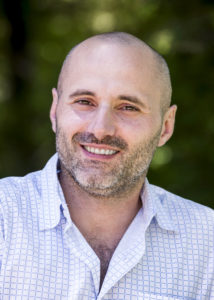Theory and homelessness
La version française de ce billet se trouve ici.
I’m writing an open access e-book on homelessness and have just released Chapter 2 titled “Theory and homelessness.” The PDF version of the full chapter is available here.
Ten things to know:
1. When researchers develop logical explanations of observed behaviour, we call it theory. That’s the focus of this chapter, which provides a formal definition of theory and then discusses how theory has evolved in the homelessness sector.
2. Theory helps us from being taken in by flukes. Theory helps us understand what leads to what—indeed, anyone wanting to change the way a pattern unfolds relating to some aspect of homelessness must appreciate theory.
3. Theory helps us focus. Our theoretical perspectives have a major impact on both what we focus on and what we overlook. As theory develops and as some perspectives become more popular than others, our thinking changes, as does the emphasis of researchers, funders, advocates, practitioners and policy-makers.
4. Researchers from different academic backgrounds (e.g., economics, social work, etc.) stress different theories when trying to explain homelessness. Their research will emphasize those factors that tend to mesh well with their own theoretical perspectives. This makes it essential for researchers from different academic backgrounds to collaborate with each other, across disciplines, to help prevent and overcome blind spots.
5. To illustrate the evolution of theory in the homelessness sector, this chapter provides an overview of key academic articles. Many studies—even academic ones—make no explicit reference to the word “theory.” Yet, almost all studies ultimately contribute to theory.
6. One study highlighted in this chapter is Kuhn and Culhane’s 1998 article about cluster analysis. It sheds light on the fact that a small proportion of persons in emergency shelters – i.e., the ‘chronic shelter stayers’ – account for a large majority of service use and costs. The article has therefore had the effect of encouraging policy-makers to focus on this group in order to reduce public costs.
7. Another article showcased in this chapter is Hwang’s 2000 article about high mortality rates among persons experiencing homelessness. It uses the term “mortality rate,” which measures the frequency of death in a population during a specific time frame. One of the study’s key findings is that mortality rates for Toronto men who use emergency shelters are much higher than for Toronto men who do not use emergency shelters. The study also identifies leading causes of death by age brackets.
8. A 2001 article by Quigley, Raphael and Smolensky is also highlighted in this chapter. An important takeaway from this study is that higher rent levels lead to more homelessness. Policy-makers wanting to reduce homelessness should therefore: a) strive to keep rent levels low; b) expect more homelessness when rent levels increase; and c) enhance homelessness prevention and response measures when rents are high.
9. The first academic article to use the term “Housing First” is also featured in this chapter. Authored by Tsemberis, Gulcur and Nakae, this 2004 article reports on results of the world’s first randomized control trial on Housing First. The randomized controlled study in question found very positive outcomes for Housing First participants compared with the ‘treatment first’ approach used elsewhere.
10. The chapter also shines the light on one of the first academic articles focused on trauma-informed care and homelessness. Written by Hopper, Bassuk and Olivet, this article defines trauma as “an experience that creates a sense of fear, helplessness, or horror, and overwhelms a person’s resources for coping.”
In sum. This is a summary of Chapter 2 of a sole-authored, open access interdisciplinary textbook intended to provide an introduction to homelessness for students, service providers, researchers, policy-makers and advocates. All material for this book is available free of charge here. Newly-completed chapters will be uploaded throughout the year.
I wish to thank Sylvia Regnier, Vincent St-Martin and Alex Tétreault for assistance with this blog post.
